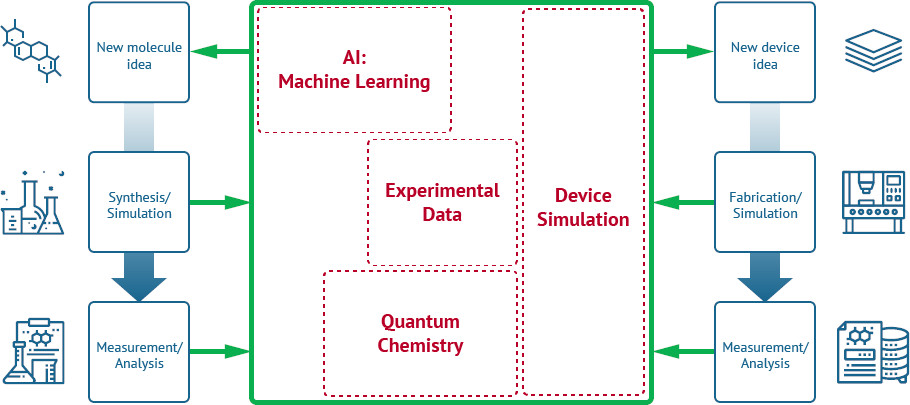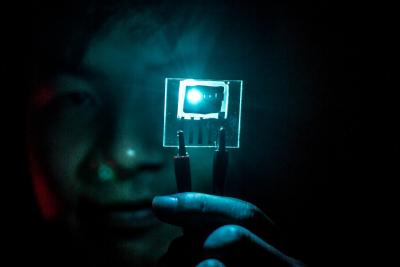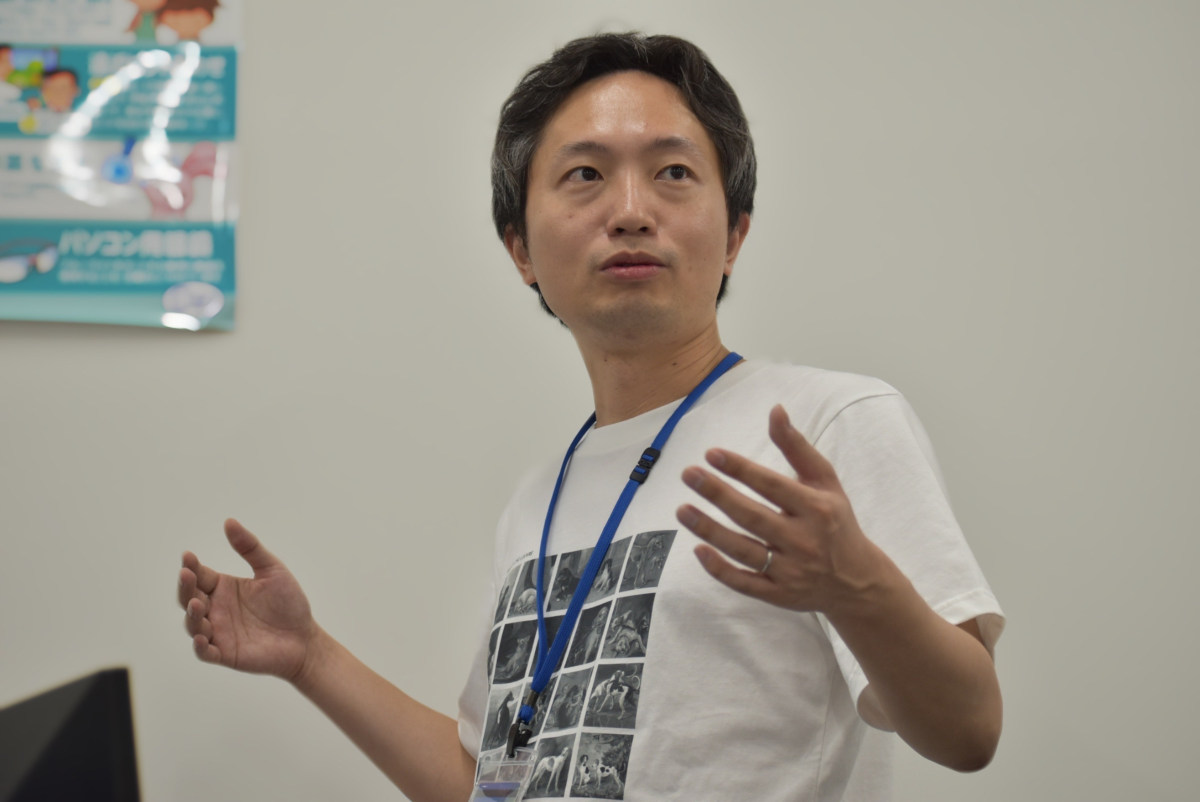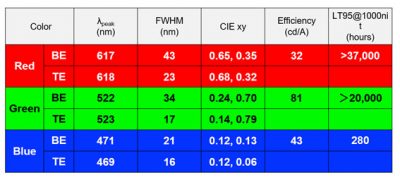 Kyulux, established in Japan in 2015, develops next generation materials for OLED displays and lighting.
Kyulux, established in Japan in 2015, develops next generation materials for OLED displays and lighting.
Based on exclusively-licensed technology from Kyushu University, Kyulux develops 4th-generation Hyperfluorescence TADF emitters that enable cost-effective, durable and efficient OLEDs that do not rely on rare metals. Kyulux is developing red, green, yellow and blue HF emitter systems.
In 2016 Kyulux raised $13.5 million from Samsung, LG, Japan Display, JOLED and more, and in 2019 the company announced it raised $31.8 million in its Series B round.
In October 2019 Wisechip launched the world's first Hyperfluorescence TADF OLED display, a 2.7" yellow PMOLED that adopts Kyulux's HF emitter system. Kyulux started shipping commercial TADF materials for Wisechip in April 2020.
4-1 Kyudai-Shinmachi, Nishi-ku
Fukuoka Industry-Academia Symphonicity (FiaS) Bldg.2
Fukuoka
819-0388
Japan
Kyulux signs an agreement with Nippon Soda to build a TADF materials mass production facility
Kyulux announced that it has singed a capital and business alliance agreement with Nippon Soda, to establish a mass production system for TADF OLED emitter materials. Nippon Soda will take an equity stake in Kyulux and will engage in process development and capital investment toward establishing the mass production system.
This will be the world's first mass production and stable supply system for TADF materials. Kyulux aims to achieve full-scale mass production of its Hyperfluoresence emitter system by 2025, and this will be an important step forward as it will require a stable supply of TADF materials.
Samsung Display: we develop blue OLED emitter technologies, both PHOLED and TADF based
Samsung Display's Lee Chang-hee, VP and head of SDC's research center, gave a talk during K-Display 2024, and updated that Samsung is progressing towards a next-generation blue OLED emitter technology in two tracks.
SDC is working with Universal Display, to adopt the company's blue PHOLED system. This is progressing, but SDC says that the pace is slow - indeed we heard from UDC lately that the introduction of a commercial material will take longer than expected.
Next generation OLED emitter development - industry update
OLED emitter materials are the heart of the OLED device, and the materials that make the most impact on the performance of the OLED display. Most OLED displays utilize red, green and blue emitters.
The efficiency of the current state-of-the-art commercial red and green OLED emitters is excellent - it is in fact close to 100% internal quantum efficiency (IQE) which means that you cannot improve much on the efficiency of the emitter itself (there's still work to be done on getting the light out of the device). Blue OLED emission is a completely different story - current commercial blue emitters suffer from very low efficiency, around 25%. This means that three quarters of the energy goes to waste. Changing to a 100% IQE blue emitter could end up improving the total display efficiency by 20-30%.
Kyulux announces a new CFO as the company progresses towards Hyperfluorescence commercialization
Japan-based Hyperfluorescence materials developer Kyulux announced that Jimyeong Yu will join its executive management team, as the company's new Chief Financial Officer (CFO).
Jimyeong Yu will take over as Kyulux’s CFO, replacing Akira Minakuchi, who passed away in September 2023. As CFO of Kyulux, Jimyeong Yu will oversee financial accounting operations including procurement activities, and as a member of the management team, will be involved in formulating and implementing future business plans.
Kyulux raises $28.6 million, is on track to achieve full-scale mass production of its HF/TADF emitter system by 2025
Kyulux announced that it has raised $28.6 million USD in its Series C funding round, led by El Camino Capital and the MCP Group. This brings Kyulux total funding so far to $86 million USD.
A part of the Kyulux team based in Fukuoka, Japan
Kyulxu says that it will use the newly raised funds to further accelerate its product development, strengthen its IP portfolio and achieve full-scale mass production of its emitter system by 2025, with its affiliated chemical companies.
Kyulux explains how narrow-spectrum Hyperfluorescence emission is more efficient than PHOLED emission
Second-generation OLED phosphorescence emission features an internal quantum efficiency of almost 100% - which would normally mean you cannot get more efficient than that.
As Kyulux explains in a recent post, though, phosphorescent suffers from a wide emission spectrum. In order to achieve a good color gamut (for which as narrow-spectrum emission as possible is best) display makers have to filter out the "tail" of the emission. This results in reduced brightness and efficiency.
Kyulux says it is on track to commercialize green Hyperfluorescence materials in 2023, red and blue in 2024
Kyulux gave a very upbeat presentation at SID Displayweek, during which it updated on its latest material specification and its commercialization plans.
Kyulux managed to increase the lifetime of its Hyperfluorescence emitter systems (which features an IQE of 100% and a narrow emission spectrum) quite dramatically in the past year its green material now offers a lifetime of 59,000 hours (LT95@1000 nits, top emission), while the red material is at 20,000 hours. The blue material has also increase from280 hours to 450 hours in the past year.
How machine learning and AI help find next-generation OLED materials
In recent years, we have seen accelerated OLED materials development, aided by software tools based on machine learning and Artificial Intelligence. This is an excellent development which contributes to the continued improvement in OLED efficiency, brightness and lifetime.

Kyulux's Kyumatic AI material discover system
The promise of these new technologies is the ability to screen millions of possible molecules and systems quickly and efficiently. Materials scientists can then take the most promising candidates and perform real synthesis and experiments to confirm the operation in actual OLED devices.
Kyulux: our green Hyperfluoresence emitter is getting close to commercialization
Hyperfluoresence emitter system developer Kyulux announced that its green material is getting close to commercialization. The company is now working closely with OLED makers, preparing for early adoption.
Kyulux says that its green emitter has not only met the required performance of OLED panel makers, in terms of efficiency, lifetime and driving voltage - but has actually surpassed the performance of green phosphorescent emitters in top emission devices. The green HF device achieves higher current efficiency, longer lifetime and offers a narrow emission spectrum and can thus enable better chromaticity.
Kyulux reveals its latest TADF material performance
During SID Display Week 2021, Kyulux detailed its latest TADF material performance. The red and green materials are "close to commercialization", and the company reports "excellent progress" with its blue emitter.
Using simulations, Kyulux shows how its Hyperfluorescence system is more efficient than a comparable phosphorescence emitter. While both emitters feature pretty much the same EQE, the narrow spectrum of the HF system which results in higher light intensity and can enable more efficient displays - by around 10%, according to Kyulux.
Pagination
- Page 1
- Next page









